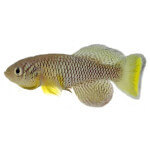
Gene : EEF1A1A - ENSNFUG00015018495 - Nothobranchius furzeri (Turquoise killifish)
General information
Gene identifier
ENSNFUG00015018495
Name
EEF1A1A
Description
elongation factor 1-alpha 1 [Source:NCBI gene (formerly Entrezgene);Acc:107396771]
Synonym(s)